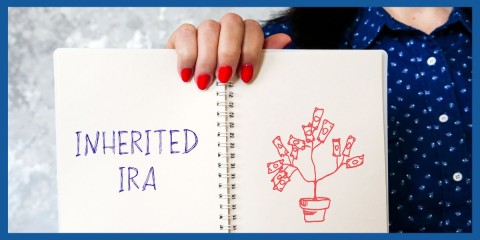Common Questions for Safe Harbor and Profit Sharing 401(k) Plans
Planning for retirement brings forth many questions. Which type of account is best? How much should I be saving? 
Everyone’s unique situation brings a different answer. However, the more you know about planning for retirement, the better off you will be in the future.
401(k) retirement plans continue to offer some of the best savings potential for workers. Both employees and employers contribute to an account investing in mutual funds, stocks and/or bonds. Over time, the account can grow and provide the account holder a healthy savings account to last throughout retirement.
More than 59 percent of working Americans receive access to 401(k) retirement plans through their employers. With numerous options available, the type of 401(k) you choose may vary depending on your specific financial situation.
A 401(k) for Everyone
With IRAs and a variety of 401(k)s, sorting through the options takes time and could overwhelm an inexperienced saver. Check out this article distinguishing Traditional 401(k) accounts and Roth 401(k) accounts, and clear up some of that confusion.
With Traditional 401(k) plans, the Internal Revenue Service (IRS) requires all plans to undergo a nondiscrimination test. This test ensures that each employee receives the same benefits regardless of their compensation level or position within the company. No matter the employee, they should receive access to retirement plans with the same contributions amounts, plan type and tax deductions.
The nondiscrimination test separates employees into two categories: highly compensated employees and non-highly compensated employees. Highly compensated employees must earn at least $130,000. The IRS also considers any employee with a stake in the company higher than 5 percent a highly compensated employee.
In order to retain highly valuable workers, many employers offer retirement plans to satisfy these employees. Profit sharing and safe harbor 401(k) plans expand the options available so that everyone can plan for their retirement in a manner most cohesive with their financial situation.
What is a Safe Harbor 401(k)?
While the nondiscrimination test helps protect employees on every level, it adversely affects highly compensated workers. Safe harbor provisions on retirement accounts allow for a bypass of the nondiscrimination test while remaining fair for all members of the company.
With the inclusion of a safe harbor provision, all employer contributions are vested immediately. This means that the employee takes ownership of these contributions and the employer cannot take any of the money back for any reason.
What are the Safe Harbor 401(k) options?
Three plans exist for employees to maximize their benefits from a safe harbor plan.
The basic safe harbor plan allows for employers to match 100 percent of an employee’s retirement contribution up to three percent of their paid wages. An additional two percent in contributions can be matched by employers up to 50 percent.
The enhanced safe harbor 401(k) lets employers match 100 percent of employee contributions up to four percent of their paid wages. No employers can match any contribution beyond the four percent threshold.
Finally, the non-elective safe harbor 401(k) option gives employees a retirement contribution equal to three percent of their annual salary. Employees do not have to make a contribution with this method.
In the basic and enhanced plans, employees must contribute in order to qualify for matched contributions within the safe harbor provision. Employees do not necessarily have to defer any retirement contribution in order to participate in a non-elective plan. However, contributions from both parties allow for savers to maximize their retirement accounts to fully enjoy their golden years.
If financially capable, maximizing retirement contributions allows for greater peace of mind in retirement. Learn more about retirement plan contribution limits in 2021.
What are the Rules for Employers Regarding Safe Harbor 401(k) Plans?
Employers wishing to include safe harbor provisions in their offered 401(k) retirement plans must give ample notice in writing to all of their employees. Not only must employers announce the availability of the plans, they must provide detailed information regarding the type of safe harbor plans available and all tax information and employee rights regarding the plans.
In order to satisfy this requirement in a timely manner, employers must give notice not less than 30 days and no more than 90 days before the year in which the plans activate. By complying with these requirements regarding notification, employers allow their employees to make the necessary inquiries and adjustments to their retirement plans.
Because employers commit to a contribution amount, they must keep their finances in proper order to guarantee a delivery on their commitment. If you own a small business and are considering including safe harbor provisions to your employees’ 401(k) retirement plans, contact a trusted accountant or financial advisor.
Employees rely on the stability of their retirement plans to plan for their future and make important financial decisions. Casting any doubt in your company’s mind regarding your ability to keep your end of the deal regarding their benefits package causes top talent to seek other employment. Securing their future secures your business’s future in turn.
Why Choose Safe Harbor Plans?
The type of 401(k) that fulfills an employee’s needs varies greatly. However, safe harbor plans offer the greatest benefit for high earners. Since the contribution rate corresponds to annual salary, those paid more see a higher contribution from employers.
Employers provide safe harbor plans due to their appeal for high earners and tax-deductible contributions.
What is a Profit Sharing 401(k) Plan?
Profit sharing 401(k) plans operate similarly to Traditional 401(k) plans. However, employers make contributions based entirely on their profitability. During a year in which the business did well, contributions rise and vice versa for less profitable years.
Employers set aside their pre-tax profits for contribution and the employee continues to defer however much of their wages they decide to. Profit sharing plans work best for small businesses who wish to offer retirement benefits but cannot guarantee a set contribution amount. Contribution limits apply in the same manner towards profit sharing 401(k) plans as other 401(k) accounts.
Are There Profit Sharing Options?
Like most 401(k) plans, profit sharing plans come in a variety of forms. The right plan depends on the employer’s capabilities and wishes regarding contribution amounts.
In a pro-rata profit sharing plan, all employers including the business owners receive the same contribution amount. Regardless of the position or status of each employee, universal contribution amounts do not vary. Pro-rata plans keep accounting simple for employers and can be added to existing plans with ease.
Another option for profit sharing, new comparability 401(k) plans allow employees to place employees within different contribution amounts. Most often, business owners desiring a higher contribution amount for themselves use this plan. Contributions can also vary for employees depending on length of employment and status within the company to reward highly valued workers
Lastly, age-weighted profit sharing plans base contribution amounts entirely on the length of an employee’s tenure at the company. Under this plan, the longer an employee works for the company the higher the employer contribution amount towards their 401(k). While similar to new comparability plans, many employees find age-weighted benefit plans a little more fair since employers cannot adjust contribution rates at their discretion.
When Should a Business Owner Offer Profit Sharing Plans?
Profit sharing plans work best for small businesses or any sized business whose profits vary tremendously. Whereas most 401(k) plans lock employers in with matching contribution amounts, profit sharing plans allow the employer to decide how much they can contribute.
In some cases, a business might not make any retirement contributions due to a poor financial year. During good years high profits allow for maximum contributions for all employees. The direct correlation between the financial health of the company and employees’ benefits creates a strong incentive for employees to do their best for the sake of the enterprise and their own benefits.
However, for many industries the booms and busts balance each other out. By refraining from imbursing retirement plan contributions, a struggling company can redirect those resources. The longevity of the business might take precedence over retirement benefits if the business turns itself around to see a large profit in succeeding years.
Find the Right Retirement Plan for You
Plan for retirement with ease by reaching out to NextGen Wealth. We offer invaluable advice for anyone looking towards retirement, wherever they are on their journey. With two decades of experience, I have helped many clients just like you find the right retirement solutions to meet their needs.
Contact us today to see if we're a good fit and schedule your retirement checkup so you can start planning for the future you're working so hard to achieve.


